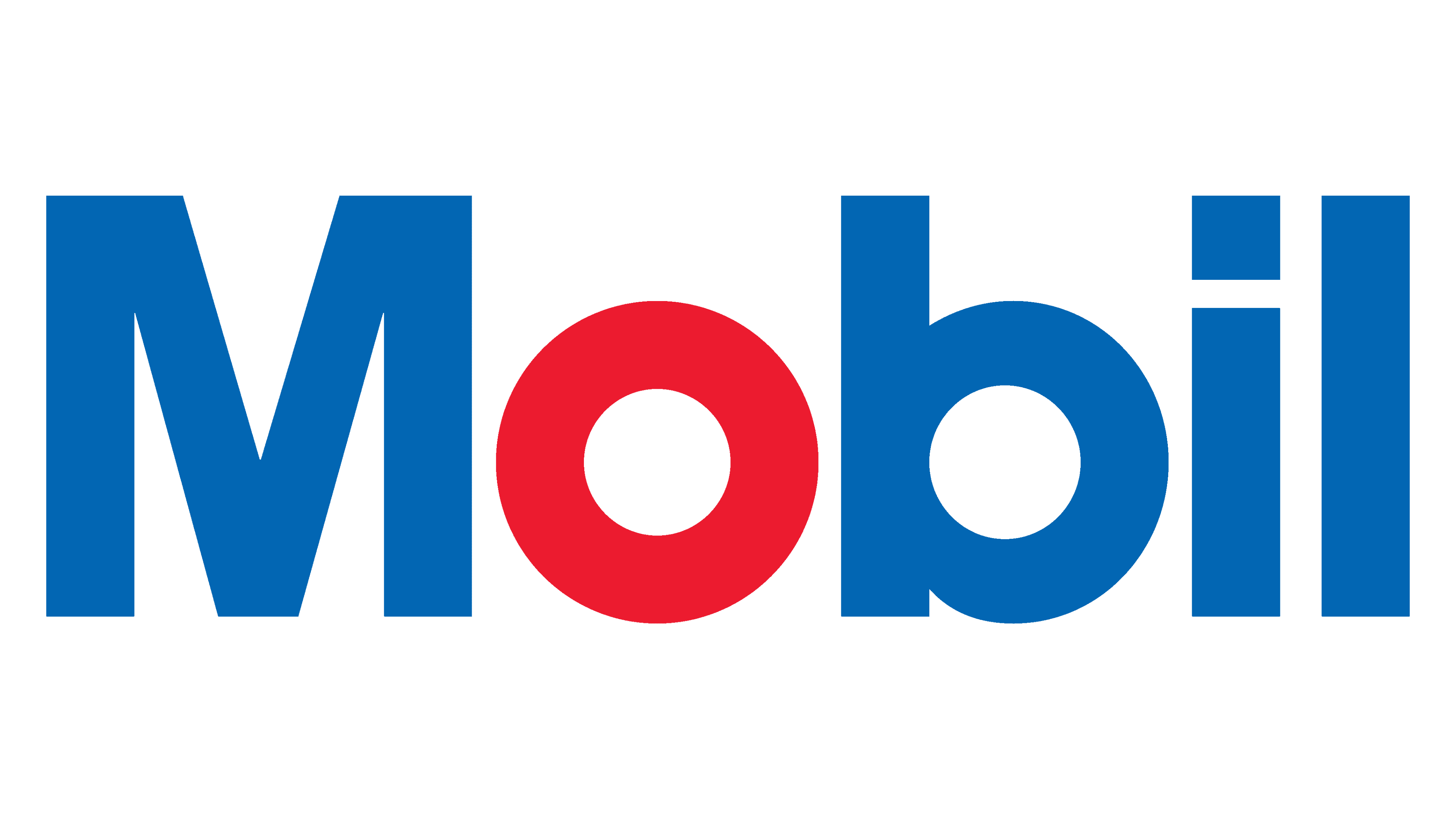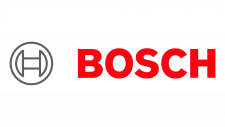Mobil Logo
Mobil, now part of ExxonMobil, is a globally recognized oil and gas corporation. It explores, develops, and produces crude oil and natural gas, and manufactures petroleum products. With a network of manufacturing plants and distribution centers, ExxonMobil operates in segments including upstream (oil exploration, extraction), energy products (fuels, lubricants), chemical products, and specialty products. It’s known for brands like Esso, Exxon, and Mobil, with operations spanning North America, Latin America, Asia Pacific, Europe, the Middle East, and Africa.
Meaning and history
The Mobil journey traces back to the early 20th century when it emerged as the Standard Oil Company of New York (Socony) after the dissolution of John D. Rockefeller’s Standard Oil Trust in 1911. Mobil pioneered the iconic “Mobiloil” lubricant and made history by opening the nation’s first drive-in service station.
In 1931, a significant milestone occurred when Socony merged with Vacuum Oil Company, resulting in the formation of Socony-Vacuum Corporation. As the years progressed, the company simplified its name to Socony Mobil Oil Company in 1955, all the while cementing the soaring Pegasus as its symbol, representing speed and strength.
The 1960s brought transformation, and in 1966, the company adopted the name Mobil Oil Corporation, echoing its popular brand. Innovation was at the forefront as Mobil played a pivotal role in the development of unleaded fuel and high-octane gasoline. It excelled in both upstream exploration and downstream sales, boasting a global network of service stations.
The modern era dawned with the groundbreaking merger of Exxon and Mobil in 1999, leading to the birth of ExxonMobil. This strategic union united Exxon’s formidable upstream capabilities with Mobil’s thriving downstream operations, creating a synergy poised for global energy sector dominance.
ExxonMobil continues to carry the Mobil legacy forward, relentlessly pushing the boundaries of technology and innovation to shape the future of the energy industry.
What is Mobil?
Mobil, a renowned entity in the energy sector, traces its origins to the early 20th century when it emerged as the Standard Oil Company of New York (Socony). Over the years, it has been at the forefront of innovation, contributing significantly to the development of unleaded fuel and high-octane gasoline. Mobil’s legacy lives on as part of ExxonMobil, a global energy leader, where its symbol, the Pegasus, still soars as a beacon of speed and strength in the industry.
1892 – 1904
This logo is a vintage emblem, rich with historical resonance, depicting the brand identity of the Standard Oil Company. The design is circular, evoking a seal or coin, which implies trust and authenticity. At its center, the magic lamp from the tale of Aladdin signifies prosperity and the ability to grant wishes, perhaps alluding to the transformative power of oil in the industrial age. Surrounding the lamp, the words “Aladdin Security Oil” are written in a stylized, antiquated script, further emphasizing the theme of time-honored reliability. The base color appears to be a weathered white, suggesting age and endurance, while the text and intricate details are in a contrasting dark hue, likely once a stark black now faded with time. This logo captures the essence of an era when oil was the burgeoning lifeblood of technology and growth, and companies like Standard Oil were at the forefront of that industrial revolution. The entire design is framed by the company name, “Standard Oil Company,” grounding the logo in its corporate identity and hinting at its once expansive reach and influence in the energy sector.
1904 – 1908
This logo is a marked departure from its predecessor, reflecting both a modernization in design and a shift in branding focus. It features a central shield-like emblem that houses the acronym “SOCONY,” which stands for Standard Oil Company of New York, an evolution from the full company name used previously. This acronym is set against a contrasting cream background, encapsulated within a navy blue and red border, colors that are often associated with strength and reliability. Below this central shield, the words “MOTOR OIL” are boldly declared, indicating a specialization that may not have been as explicitly marketed in the earlier logo.
1904 – 1932
The image to represent a gargoyle, a mythical creature often associated with protection and used historically as a decorative yet functional architectural element in buildings. This striking figure, depicted in bold red with black accents to emphasize its features, marks a radical shift from any traditional corporate logos, which typically include text or emblems. The choice of a gargoyle could symbolize vigilance and strength, qualities that a company might wish to associate with its brand. The use of red, a color that often denotes energy, power, and passion, adds to the dynamic impact of the design. The graphic style of the gargoyle, with its simplified forms and contrasting colors, is evocative of modern design trends that favor visual impact and brand recall.
1911 – 1931
This image depicts a mythical creature known as a pegasus, a significant shift from the previous gargoyle imagery. The pegasus, a winged horse from Greek mythology, often symbolizes freedom, grace, and the swift transport of poetic inspiration. Its portrayal in a simple, line-art style focuses on the creature’s form and movement, creating a dynamic and uplifting visual.
The transition from a gargoyle, which represents protection and steadfastness, to a pegasus implies a brand evolution towards notions of speed, agility, and reaching new heights — qualities that resonate with progress and aspiration. This reflect a company’s desire to be seen as not just a guardian but also as a pioneering and innovative force in the industry.
The use of a single color and the absence of any textual elements suggest a move towards a more abstract and universally recognizable branding element. The pegasus logo could be perceived as a strategic move to align the company’s identity with attributes such as agility, high performance, and the ability to rise above the competition.
1931 – 1932
The logo shows a significant evolution from the previous imagery. Here, the dynamic gargoyle figure is now integrated with bold, capitalized text stating “GARGOYLE MOBILOIL.” This combination of text and imagery creates a logo that is more descriptive and direct in communicating the brand and product. The gargoyle is still rendered in a striking red, maintaining its association with strength and protection, but now it’s complemented by the product name in an equally assertive black typeface.
This logo likely dates from an era when branding started to consolidate both visual and textual elements to convey a comprehensive brand identity. The name “Mobiloil” suggests a specialization in motor oils, indicating the company’s focus and area of expertise. The design’s boldness, with its thick lettering and high-contrast colors, ensures readability and brand recognition, crucial for distinguishing the product in the competitive market of automotive lubricants. The graphic design choices made here reflect a time when companies were becoming more aware of the importance of brand identity in consumer recognition and loyalty.
1932 – 1959
The logo has undergone a clear evolution from the previous iteration. The iconic red Pegasus, a winged horse from Greek mythology, symbolizes speed, power, and the mythical ability to travel between heaven and earth. This represents a significant departure from the previous gargoyle motif, which conveyed stability and protection. The Pegasus suggests a leap into a realm of agility, high performance, and transcendent capabilities, apt for a brand associated with motor oils and the automotive industry.
The text “Mobiloil” is prominently displayed beneath the Pegasus, in a bold, straightforward font that contrasts with the more fluid and dynamic imagery above. This represents a harmonious balance between the brand name and the aspirational qualities that the Pegasus embodies. The color scheme remains consistent with the strong red for the Pegasus, ensuring brand continuity and recognition. This logo suggests a company that is elevating its brand proposition, aligning itself with the notions of progress and excellence in its field.
1932 – 1939
The updated logo maintains the striking red Pegasus, soaring upwards, symbolizing lofty aspirations and the freedom of movement. This iteration places the Pegasus within a shield-shaped border, a common heraldic element that conveys tradition, protection, and strength. Below the mythological creature, “Mobilgas” is prominently featured in bold, capital letters, indicating the specific product in the brand’s portfolio.
The addition of “SOCONY-VACUUM” text at the bottom of the shield represents a merger or partnership that likely occurred, signifying the brand’s growth or expansion. This detail encapsulates the company’s history and heritage, adding depth to the brand story. The overall design, with its clearly defined contours and use of a singular bold color, speaks to a timeless aesthetic aimed at ensuring memorability and brand recognition. The shield frame suggests a seal of quality, assuring customers of the product’s reliability and the company’s commitment to excellence.
1939 – 1956
The evolution in the logo features the Pegasus now encircled, emphasizing a global reach and inclusive approach. “Mobilgas,” beneath the iconic winged horse, is displayed in a bold, clean font, underscoring the brand’s name with clarity and impact. The circular boundary represents unity and continuity, suggesting the brand’s all-encompassing service and reliability. The red and blue color scheme remains consistent, offering a strong visual identity that is both striking and familiar. This design shift signifies a modernizing brand that values both its storied past and its commitment to being a unifying force in the energy sector. The simplicity and symmetry of the design lend it a timeless quality, ensuring the logo’s effectiveness across various applications and time periods.
1956 – 1966
The logo transitions from the previous circular format to a shield-like shape, embracing a more angular and structured design. The word “Mobil” is now prominently displayed in a large, bold, sans-serif typeface, dominating the upper portion of the logo. This typographical shift to simplicity and boldness reflects a modern design trend that emphasizes clarity and impact.
The Pegasus, previously central within a circle, is now positioned within the lower portion, soaring above a red chevron. The chevron adds a sense of motion and direction, suggesting forward movement and progress. The red and blue color scheme is retained, preserving the brand’s visual identity, but the Pegasus is minimized relative to the brand name, indicating a possible shift in branding strategy where the name “Mobil” becomes the primary identifier, rather than the imagery alone.
This design evolution signifies a brand adapting to the times, opting for a logo that balances iconic imagery with the necessity of brand name recognition in an increasingly competitive market. The overall effect is a cleaner, more contemporary logo that would resonate well in the mid-20th-century aesthetic and commercial landscape.
1964 – Today
The transition in the Mobil logo from the previous iteration is marked by a significant simplification. Gone is the shield and the detailed Pegasus figure, replaced with a starkly minimalist design. The word “Mobil” is in bold, blue capital letters, with the “o” highlighted in red, providing a pop of color that draws the eye and offers a modern, clean look.
This redesign strips away the previous elements that provided a sense of motion and tradition, opting instead for a logo that prioritizes immediate brand recognition. The use of a single red letter amidst the blue creates a visual anchor, symbolizing perhaps a single point of focus or a beacon in the industry. This stark design is reflective of the mid-to-late 20th-century movement towards minimalism in branding, focusing on the essence of the brand identity without additional ornamentation.
The new logo’s simplicity ensures versatility across various mediums, from small-scale digital applications to large signage, indicating a forward-thinking approach to brand presentation in an increasingly diverse media landscape.





















